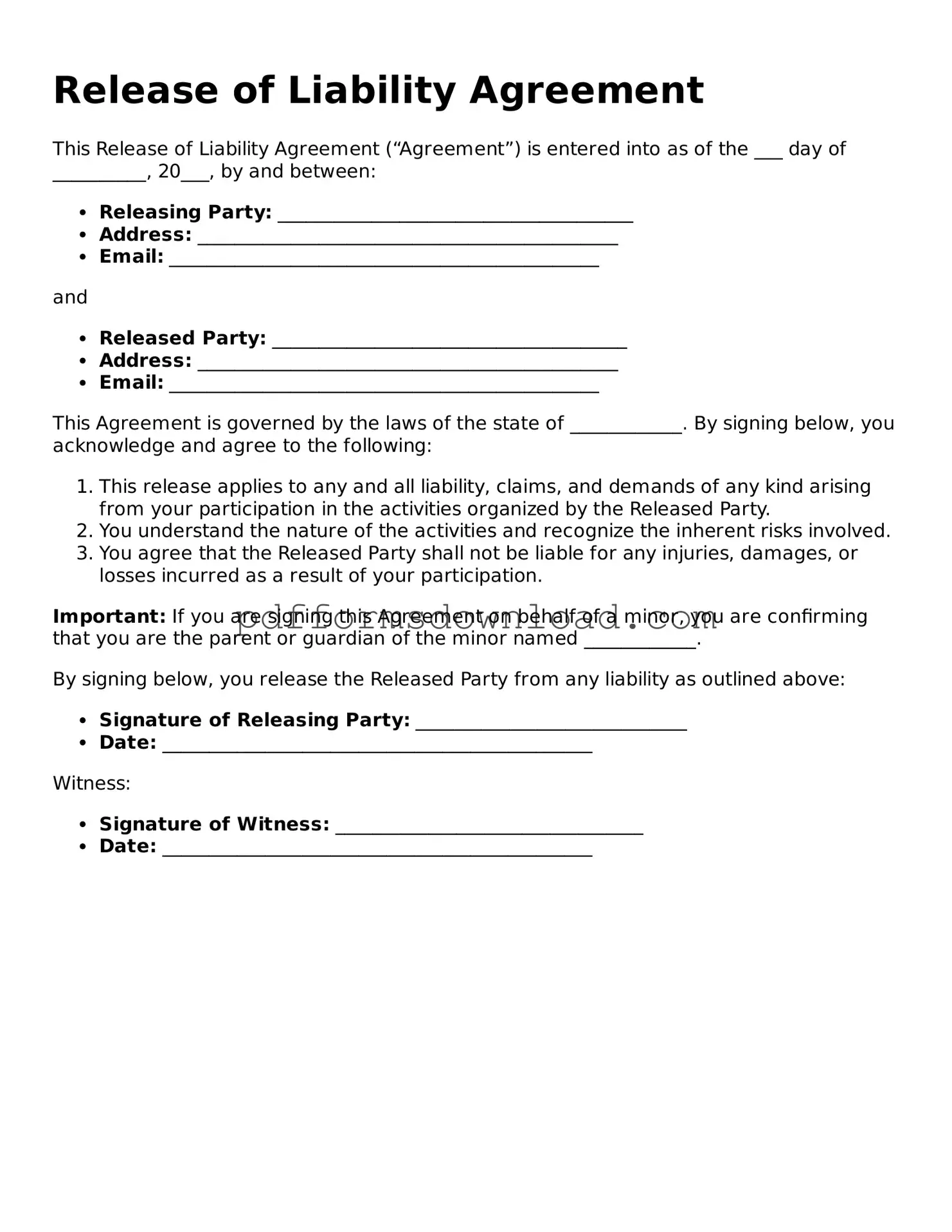What is a Release of Liability form?
A Release of Liability form is a legal document that allows one party to waive their right to sue another party for any injuries or damages that may occur during a specific activity or event. It is often used in situations where there is a risk of injury, such as sports events, recreational activities, or any scenario where participants may encounter potential hazards.
Why should I sign a Release of Liability form?
Signing a Release of Liability form protects the organizer or provider of an activity from legal claims. By signing, you acknowledge the risks involved and agree not to hold the provider responsible for any injuries or damages that may occur. This is especially important in activities that inherently carry risks, such as extreme sports or adventure outings.
Is a Release of Liability form enforceable?
In most cases, yes. However, the enforceability of a Release of Liability form can depend on several factors, including the language used in the document and the specific laws of your state. Courts generally uphold these forms as long as they are clear, specific, and voluntarily signed. It’s essential to read the form carefully before signing to understand what rights you may be waiving.
Can I still sue if I sign a Release of Liability form?
Generally, signing the form limits your ability to sue for injuries related to the activity covered by the release. However, there may be exceptions. If the injury was caused by gross negligence or intentional misconduct, the release may not protect the provider. It’s always wise to consult with a legal professional if you have concerns about your rights after signing.
Do I need a lawyer to draft a Release of Liability form?
While you can find templates online, having a lawyer draft or review the form is highly recommended. A lawyer can ensure that the document is tailored to your specific situation and complies with local laws. This can help prevent potential legal issues down the line and provide peace of mind for both parties involved.
What should I look for in a Release of Liability form?
When reviewing a Release of Liability form, check for clear language that outlines the risks involved, the rights being waived, and the specific activities covered. It should also include the names of the parties involved and a section for signatures and dates. Make sure you understand all terms before signing, and don’t hesitate to ask questions if something is unclear.
Can a minor sign a Release of Liability form?
Minors typically cannot sign a Release of Liability form on their own. Instead, a parent or guardian must sign on their behalf. This signature indicates that the parent or guardian understands the risks and agrees to the terms of the release for the minor. Always check local laws, as requirements can vary by state.
